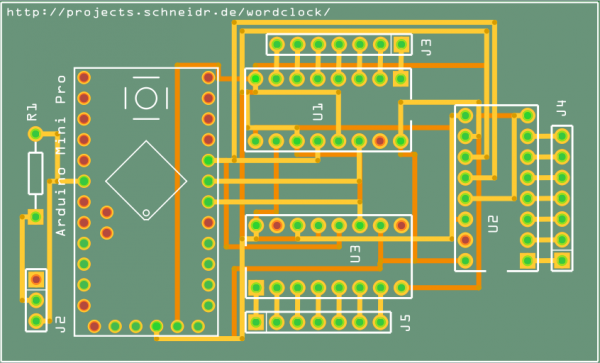This weekend I did some final troubleshooting on my first wordclock. I had the problem that every time the display was updated all LEDs flickered a little. Very annoying, especially when there is no change.
Finally it hit me: I had connected the 74HC595 chips to the pins 1, 2 and 3. I guess I just wanted to “start” somewhere. What I didn’t account for, is that Arduinos serial port is accessible via pins 0 and 1. They are even labeled with RX and TX. So, everytime I sent data to my computer over the serial line it also went out on pin 1, which is connected to the 74HC595, hence the flickering.
Long answer short: Don’t use pins 0 and 1. Except for serial connections of course.

